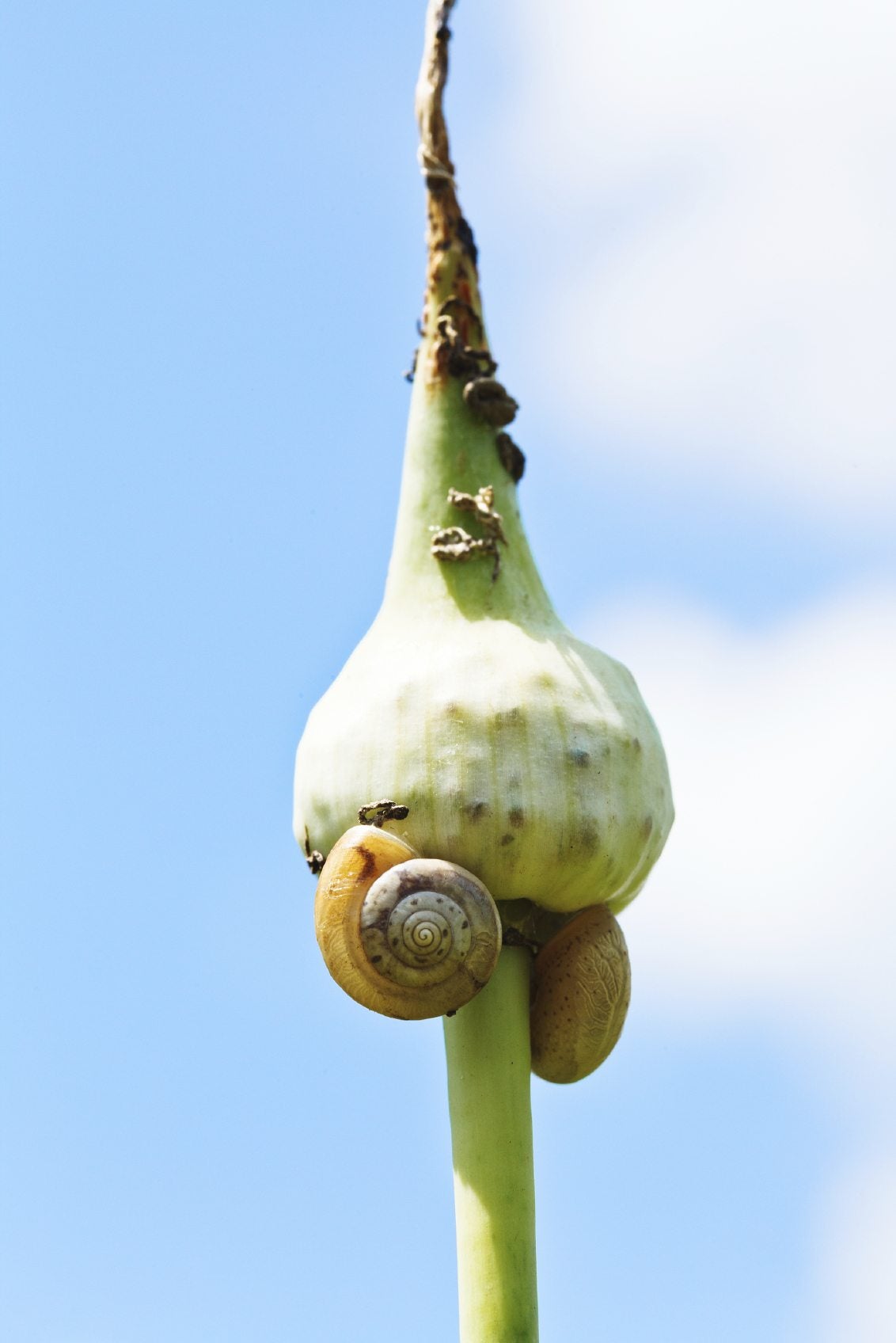
Garlic packs a robust aroma and flavor that many of us can’t do without. The good news is that garlic is fairly easy to grow and for the most part, is pest resistant. In fact, garlic is often a part of co-planting or companion planting, wherein garlic is grown alongside other plants to their mutual benefit. That said, even garlic has its share of garlic plant pests. What are some common garlic pests and how can you control pests on garlic bulbs?
What are Common Garlic Pests?
Garlic has both natural fungicidal and pesticidal properties. That’s why many gardeners plant it near certain crops. Garlic contains the compound allicin, which is released when the cloves are crushed or bitten. Possibly, this is garlic’s defense mechanism, but whatever the case, it serves to deter some pests like aphids near lettuce. Apparently, they don’t love garlic as much as I do; they view it as more like the repellent it is to Dracula. Even so, the plant may get garlic bugs that worship the bulb. Many of these garlic plant pests also plague onions, which are closely related to garlic. Mites – Bulb mites are one example of pests found on garlic bulbs and other alliums. Off white in color, shiny, and globular, they are found huddled together under the plants’ roots. Bulb mites reduce harvest and generally stunt plant growth. They can live from one growing season to the next, so it is recommended that you rotate plantings by skipping the allium varieties in successive years. Leaf miners – Leaf miners (Liriomyza huidobrensis) are another pest found on garlic bulbs, first as eggs lain within the leaf tissue. The hatchlings are tiny, off-white larvae that then tunnel inside the leaves, leaving visible damage. Although the resulting leaf damage is primarily cosmetic, the presence of leaf miners may damage other leafy crops in the garden. Wheat curl mites – Severe infestations of wheat curl mite can cause twisted, stunted leaf growth but its major impact is upon the bulb. Wheat curl mites (Eriphyes tulipae) can cause cloves to dry out. The mites act as a vector for Yellow Streak virus as well. The mites are so tiny; they are nearly invisible to the naked eye. Treating the mites is possible by dipping the seed garlic in hot water prior to planting. Nematodes – A particularly insidious garlic bug is the nematode (Ditylenchus dipsaci), which lives and reproduces inside garlic plants. These microscopic worm-like pests eat all parts of the stems, leaves, and bulbs. It can live without water and survive for many years in the soil. Nematode nibbling can result in deformation, discoloration, and tissue collapse of the bulb. The worst thing about garlic nematodes is that their population continues to expand exponentially for years with no visible signs of damage. What this means is that for years, healthy garlic plants will not be significantly affected but then all at once the astronomical nematode population will decimate the garlic crop. Thrips – Lastly, thrips are the garlic plant’s most common pest. They suck the sap from the plants, gradually slowing growth and bulb production. If the infestation is severe, entire commercial garlic fields can wilt and die. In additional to those above, garlic plants can, on occasion, be feasted on by snails.
Control of Garlic Insect Pests
Some of the above pests can be dealt with by applying commercially available pesticides. If you would rather use a more organic method, the first order of business is to practice crop rotation, not just for garlic, but for any alliums. Also, seek out guaranteed clean seed. Practice strict sanitation and only use disease-free planting material. Sticky traps can be laid to entrap thrip migrations. Garlic’s powerful aroma may also be a key player in garlic insect pest control. Garlic extract is used to treat some plants and for repelling pests such as slugs. Strangely, an application of garlic extract may be the key to thwarting nefarious insect armies and if your nose is up for it, certainly worth a try.
Sign up for the Gardening Know How newsletter today and receive a free copy of our e-book "How to Grow Delicious Tomatoes".

Amy Grant has been gardening for 30 years and writing for 15. A professional chef and caterer, Amy's area of expertise is culinary gardening.
